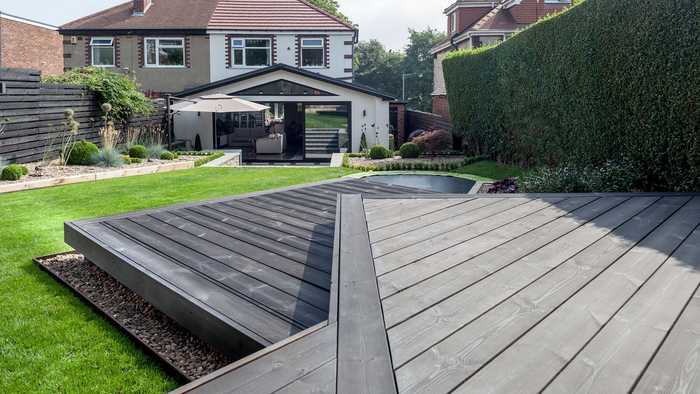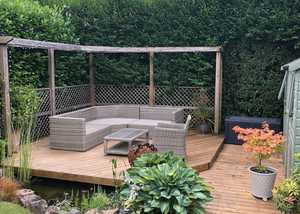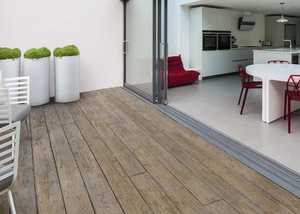Choosing Your Decking
Having a nice deck is one of the most popular ways of adding value to your home while creating a perfect place for outdoor eating, entertaining or just relaxing and enjoying warm summer days.
Weather you prefer contemporary or traditional decking there are loads of options to choose from but you also need to take into consideration a range of factors before starting your project.

Timber or Composite Decking
The first choice you will need to make is whether you are going to use timber or composite decking. There are number of pros and cons for both and when making decision you would need to bear in mind your location and climate, how you planning to use your deck or how much maintenance you are prepared to do.
Timber decking is still the most popular choice. It is generally cheaper and offers beautiful, natural look. Wood can also be stained and vanished in different colours so you can easily change the look of your deck. However, a downside of timber decking is high maintenance. It needs to be cleaned, resealed and stained at least once a year which can be expensive and time consuming. Timber decking can also split, crack as well as grew algae and become really slippery when wet.
Thanks to advancements in technology, composite decking is nowadays designed to look and feel like real timber but with few added benefits. It comes in a range of finishes and colours, it is more slip resistant and splinter free. It also requires a very little maintenance and has a longer life span. On a downside, the cost will initially be higher than wooden alternatives and composite decking doesn’t always have that warm, natural feel of real timber.
There is no right or wrong answer when choosing your decking and it is down to personal preference and suitability for every particular project.


Before selecting your decking, you may also wish to consider:
Site:
Is the site flat, sloping or on difficult terrain – can changes of level be built-in to add interest?
Position:
Is the deck shaded, in the sun, or will it combine elements of both? Do you wish to include features to add shade or screening from the wind?
Privacy:
Is the deck intended to be a private space or on public view? Will trees, shrubs, boundaries and buildings provide privacy?
Services:
Will the deck's location interfere with drains and manholes? The design can look to incorporate the need to access such services.
Usage:
Is the deck primarily for adults or for family use? You may wish to incorporate a children's play area, seating or entertaining area etc.
Features:
Many features can be incorporated into deck design – lights, planter boxes, seats, sand pits, trellis, arbours, pergolas, storage boxes - almost anything is possible.
Styling:
Do you want a contemporary or traditional look? What style of boards, handrail and balustrades will you choose for your deck?
Planning:
Is planning or building regulation approval required? If your deck is above 600mm high different regulations will apply and we would recommend you check with your local authority before starting the project. For more information see our “Timber Decking Regulations” Guide which outlines advice given by the Timber Decking Association, Building regulations and British Standards
At Fountain timber, we stock a wide range of traditional timber decking boards, IRO Coloured, heath enhanced decking boards Millbord, SmartBoard and Habitat+ composite decking as well as decking components and accessories.
The information and advice in this article is provided in good faith and is designed to give general information and guidance. Any reliance you place on such information is therefore strictly at your own risk. If in doubt we strongly recommend you seek professional assistance.
If you need further advice with your purchase please ask our experienced staff, we will be happy to help!

